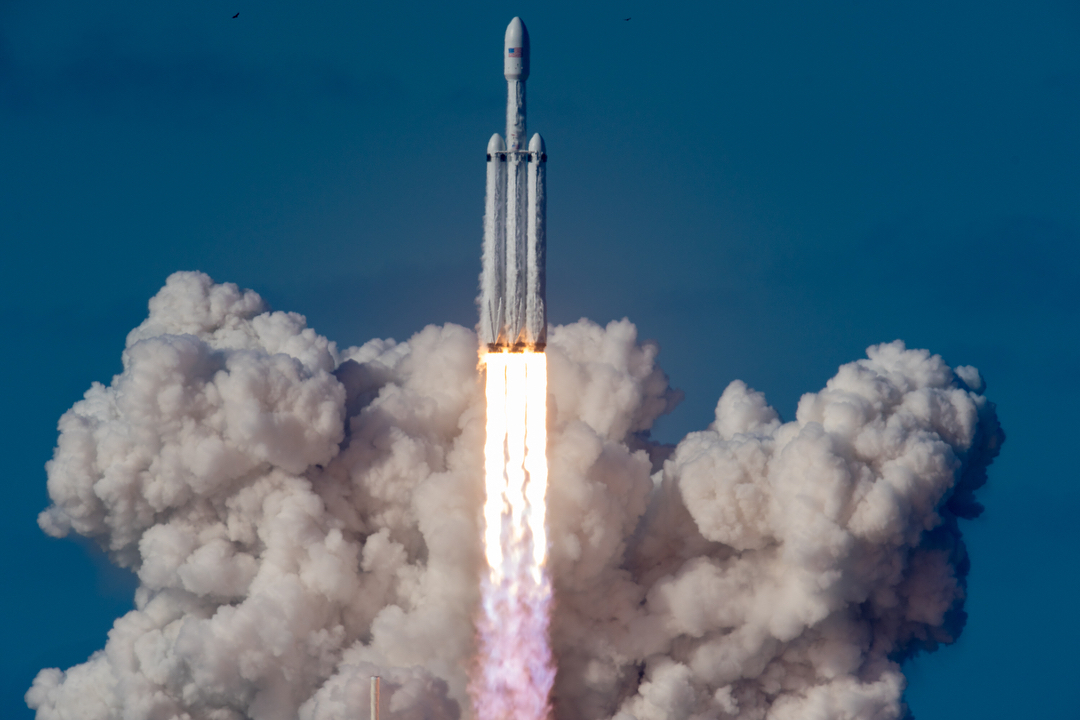NASA's highly anticipated mission to Jupiter's ocean moon Europa now has a rocket ride.
The $4.25 billion Europa Clipper spacecraft will launch atop a SpaceX Falcon Heavy rocket, NASA officials announced Friday (July 23). The total value of the contract is about $178 million, they added.
If all goes according to plan, Clipper will lift off in October 2024 from NASA's Kennedy Space Center in Florida and arrive in orbit around Jupiter in April 2030. The probe will then study Europa in depth during nearly 50 close flybys of the moon over the course of about four Earth years, mission team members have said.
Video: SpaceX Falcon Heavy rocket will launch NASA's Europa Clipper to Jupiter
Related: Photos of Europa, mysterious icy moon of Jupiter

Europa harbors a huge ocean of liquid water beneath its icy shell and is regarded as one of the solar system's best bets to host alien life. Clipper will, among many other tasks, characterize the ocean and ice shell and hunt for good, safe places to land a life-hunting Europa surface craft, which Congress has directed NASA to develop. (The lander mission remains a concept for now, however; it does not have funding and is not on NASA's books yet.)
Today's announcement ends a lengthy launch limbo for the Europa Clipper mission. Congress originally instructed NASA to launch both Clipper and the future lander on the Space Launch System (SLS), the giant rocket that the agency is building to launch people and probes to deep-space destinations.
But the development of SLS has been plagued by delays and cost overruns over the years. The megarocket still hasn't flown, and its first few missions are already devoted to NASA's Artemis program of lunar exploration, which aims to land people on the moon as early as 2024 and establish a sustainable human presence there by the end of the decade.
Get the Space.com Newsletter
Breaking space news, the latest updates on rocket launches, skywatching events and more!
Photos: 10 extraordinary ocean worlds in our solar system

It has therefore been unclear when an SLS would become available for Europa Clipper. Some wiggle room for the mission opened up last summer, when the U.S. House of Representatives said in its proposed 2021 budget that NASA was to launch Clipper by 2025 and the future lander by 2027, and to use SLS for both "if available."
The wording greenlit the possibility of a commercial alternative to SLS, and the Clipper team started planning for both contingencies — a double duty that negatively affected the mission's maturation, team members have said.
Then, this past January, the Europa Clipper team finally got the clarity it wanted, in the form of a memo from NASA's Planetary Missions Program Office. It told mission team members to stop planning for a possible SLS launch because Clipper would ride to space on a commercial rocket.
And now we know which rocket that will be. (NASA's announcement today didn't state which launchers Falcon Heavy bested for the Clipper contract.)
Clipper's ride to Europa will be more circuitous with a Falcon Heavy launch than it would have been aboard SLS, which NASA touts as the most powerful rocket ever developed. SLS would have sent Clipper on a direct-to-Jupiter trajectory, arriving at the giant planet less than three years after liftoff.
The use of a commercial rocket will require Clipper to perform speed-boosting flybys of Mars and Earth in February 2025 and December 2026, respectively, mission project scientist Bob Pappalardo of NASA's Jet Propulsion Laboratory in Southern California said earlier this year.
Falcon Heavy has flown three times to date, most recently in June 2019, when it launched a mission for the U.S. Space Test Program.
Mike Wall is the author of "Out There" (Grand Central Publishing, 2018; illustrated by Karl Tate), a book about the search for alien life. Follow him on Twitter @michaeldwall. Follow us on Twitter @Spacedotcom or Facebook.
Join our Space Forums to keep talking space on the latest missions, night sky and more! And if you have a news tip, correction or comment, let us know at: community@space.com.

Michael Wall is a Senior Space Writer with Space.com and joined the team in 2010. He primarily covers exoplanets, spaceflight and military space, but has been known to dabble in the space art beat. His book about the search for alien life, "Out There," was published on Nov. 13, 2018. Before becoming a science writer, Michael worked as a herpetologist and wildlife biologist. He has a Ph.D. in evolutionary biology from the University of Sydney, Australia, a bachelor's degree from the University of Arizona, and a graduate certificate in science writing from the University of California, Santa Cruz. To find out what his latest project is, you can follow Michael on Twitter.









